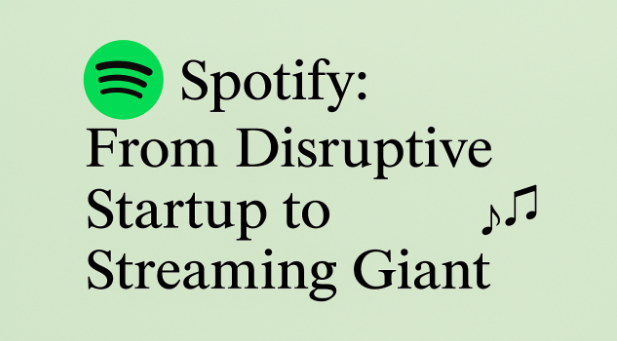Spotify History: From Startup to Global Music Giant

Spotify history is a story of innovation, disruption, and changing how people listen to music worldwide. Launched in 2008, Spotify Spotify history became one of the leading music streaming platforms. Today, millions of people use Spotify daily to listen to songs, podcasts, and playlists. The company’s journey reflects not only the evolution of digital music but also the way technology transformed the entertainment industry.
Spotify history begins in Sweden, where two entrepreneurs saw a future beyond CDs, MP3 players, and illegal downloads. They envisioned a platform where users could access millions of tracks instantly without needing to own them. What started as a small idea grew into a global movement that redefined how artists and listeners connect.
The Birth of Spotify in Sweden
Spotify was founded in 2006 by Daniel Ek and Martin Lorentzon in Stockholm, Sweden. At that time, the music industry was struggling due to piracy and declining CD sales. People used peer-to-peer sites like Napster or LimeWire to get free music, but this caused huge losses for record labels and artists.
Ek and Lorentzon believed there was a legal solution. Their idea was to create a streaming service that felt as quick and easy as downloading music illegally but would pay royalties to artists. They wanted a model where users could listen for free with ads or pay for a premium subscription for unlimited, ad-free music.
Official Launch in 2008
Spotify officially launched to the public in October 2008 in Europe. It offered users instant access to a library of millions of tracks. Unlike downloading, streaming allowed people to play songs without taking up space on their devices. This idea caught attention quickly, especially among young listeners.
The platform used peer-to-peer technology at first to ensure smooth playback and reduce costs. Over time, Spotify shifted to cloud-based streaming, improving reliability and user experience.
Expanding Beyond Europe
For the first few years, Spotify was available only in select European countries. However, the company always had global ambitions. In July 2011, Spotify entered the U.S. market, partnering with Facebook to boost its reach. This move was a turning point because it gave Spotify exposure to millions of potential users.
With celebrity endorsements and strong marketing campaigns, Spotify quickly became popular in the U.S. By 2013, it was available in more than 20 countries, and its user base continued to grow rapidly.
The Growth of Premium Subscriptions
One of the key factors in Spotify history is its premium subscription model. While many people used the free ad-supported version, millions upgraded to Premium for offline listening, better sound quality, and no ads.
By 2015, Spotify had more than 20 million paying subscribers. This number doubled in just two years, showing the growing demand for music streaming services. Today, Spotify has over 600 million monthly active users, with nearly half on paid plans.
Spotify vs. Competitors

Spotify was not the only player in music streaming. Competitors like Apple Music, Amazon Music, Tidal, and Deezer also entered the market. Apple Music, launched in 2015, posed one of the biggest threats because of Apple’s massive iPhone user base.
However, Spotify stayed ahead with personalized playlists like Discover Weekly and Daily Mix, which used algorithms to recommend new music. These features became signature elements of Spotify, keeping users engaged and loyal.
Going Public on the Stock Market
Another big moment in Spotify history was when it went public on April 3, 2018. Unlike traditional initial public offerings (IPOs), Spotify used a direct listing on the New York Stock Exchange. This unusual move reflected the company’s modern, disruptive approach.
At the time of its listing, Spotify was valued at nearly $30 billion. Going public gave the company more visibility and resources to expand globally.
The Rise of Podcasts on Spotify
Around 2019, Spotify expanded beyond music into podcasts. The company acquired podcast networks like Gimlet Media and Anchor. It also signed exclusive deals with big names, including Joe Rogan, which attracted millions of listeners.
Podcasts became a major part of Spotify’s strategy, helping the platform compete not just with music services but also with platforms like YouTube and Apple Podcasts. By 2023, Spotify had become one of the world’s largest podcast platforms.
Artist Relationships and Controversies
Spotify history also includes debates about artist payments. While the service pays royalties, many artists argue that the payouts per stream are too small. Some, like Taylor Swift in 2014, pulled their music from Spotify in protest. However, she later returned after negotiations improved.
Despite controversies, Spotify created tools for artists to promote their music, see analytics, and reach global audiences. This helped many independent musicians build careers without traditional record deals.
Spotify Today
As of 2025, Spotify is available in over 180 countries and offers more than 100 million songs and 5 million podcasts. It has become a cultural hub where users can share playlists, discover new genres, and follow their favorite artists.
Spotify’s algorithm-driven recommendations, user-friendly design, and constant innovation keep it ahead in the market. From its humble beginnings in Sweden, Spotify is now a global leader in digital audio.
Why Spotify Changed Music Forever

Looking at Spotify history, it is clear the platform changed music consumption in several ways:
- Shift from ownership to access – People no longer need to buy CDs or downloads; they can stream any song anytime.
- Personalized listening – Spotify’s recommendation system makes discovering new music effortless.
- Global reach for artists – Independent musicians can reach fans worldwide without major labels.
- Integration of podcasts and music – Spotify became an all-in-one audio platform.
Conclusion
The Spotify history is more than a business success story; it’s a cultural revolution. From its launch in Sweden to becoming a global giant, Spotify transformed how people experience music and podcasts. It solved the piracy problem, created new opportunities for artists, and brought the joy of instant music to millions.
As technology continues to evolve, Spotify will likely play an even bigger role in shaping the future of digital audio. Its journey proves that innovation, combined with a vision to solve real problems, can change entire industries.
FAQs
Q1. When was Spotify founded?
Spotify was founded in 2006 in Stockholm, Sweden, by Daniel Ek and Martin Lorentzon.
Q2. When did Spotify officially launch?
Spotify launched to the public in October 2008 in Europe.
Q3. When did Spotify come to the U.S.?
Spotify entered the U.S. market in July 2011.
Q4. How many songs are on Spotify today?
As of 2025, Spotify offers over 100 million tracks and millions of podcasts.
Q5. Who owns Spotify?
Spotify is a public company, but its co-founder Daniel Ek remains CEO and a significant shareholder.



